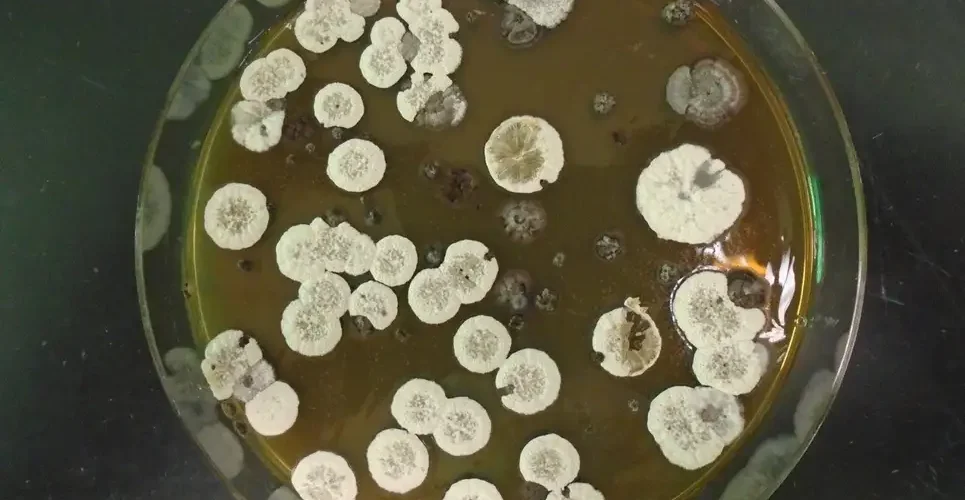Microbes May Hold the Secret to Creating More Powerful Rocket Fuel
A popular rocket fuel called RP-1 gets its name from its key ingredient: refined petroleum. Research published last week in the journal Joule suggests a potentially cleaner and more powerful ingredient: a molecule produced by the Streptomyces bacteria. The proposed fuel won’t be ready any time soon, but the new research points to this intriguing possibility.
一种被称为RP-1的流行火箭燃料因其关键成分:精炼石油而得名。上周发表在《焦耳》杂志上的研究表明,一种潜在的更清洁、更强大的成分:链霉菌产生的分子。拟议中的燃料不会很快准备好,但新的研究指出了这一有趣的可能性。
Streptomyces produces anti-fungal molecules called POP-FAMEs, otherwise known as polycylcopropanated fatty acid methyl esters. POP-FAMEs feature carbon rings made up of three carbon molecules bonded together into tight triangles with 60-degree angles. The scientists behind the new study reasoned that this carbon geometry might be superior to conventional approaches to fuel, and for two main reasons.
链霉菌产生抗真菌分子,称为POP-FAMEs,也称为聚己酸脂肪酸甲酯。POP材料的特点是碳环由三个碳分子结合成60度角的紧密三角形组成。支持这项新研究的科学家推断,这种碳几何形状可能优于传统的燃料方法,主要原因有两个。
Because the carbon geometry in a POP-FAME is more compact than those found in preexisting fuels, it allows a greater number of molecules to fill the same amount of space. What’s more, acute angles within POP-FAMEs place stress on the carbon bonds, and this stress, the researchers surmised, could be a major source of potential energy and with a cleaner production process.
由于POP-FAME中的碳几何结构比现有燃料中的碳几何结构更紧凑,因此它允许更多的分子填充相同数量的空间。此外,POP材料中碳原子之间形成的锐角会对碳键产生压力,研究人员推测,这种压力可能是潜在能源的主要来源,并具有清洁绿色的生产过程。
“This biosynthetic pathway provides a clean route to highly energy-dense fuels that, prior to this work, could only be produced from petroleum using a highly toxic synthesis process,” said author Jay Keasling in a press release. Keasling is a professor of chemistry at the University of California at Berkeley and is the CEO of the Joint BioEnergy Institute (JBEI)—a Department of Energy research center. “As these fuels would be produced from bacteria fed with plant matter—which is made from carbon dioxide pulled from the atmosphere—burning them in engines will significantly reduce the amount of added greenhouse gas relative to any fuel generated from petroleum.”
作者Jay Keasling在新闻稿中说:“这条生物合成途径为高能量密度燃料提供了一条清洁路线,在这项工作之前,这些燃料只能通过剧毒合成过程从石油中生产出来。”。Keasling是加州大学伯克利分校的化学教授,也是联合生物能源研究所(JBEI)的首席执行官,该研究所是能源研究中心的一个部门。“由于这些燃料将由以植物物质为原料的细菌生产,而植物物质是从大气中提取的二氧化碳,在发动机中燃烧它们,与石油生产的任何燃料相比,将显著减少增加的温室气体量。”
That this proposed biofuel will be environmentally safer than conventional fuels is no guarantee. We have no way of knowing the potential ways in which the production process of this fuel might be harmful, at least not until a scaled-up production process is up and running. It’s important to point out that not all biofuels are eco-friendly.
这种拟议中的生物燃料将比传统燃料更安全,这并不能保证。我们无法知道这种燃料的生产过程可能有害的潜在方式,至少在大规模生产过程启动并运行之前是这样。重要的是要指出,并非所有的生物燃料都是环保的。
Read more at Gizmodo.com
Gizmodo.com将会为您提供更多信息。











